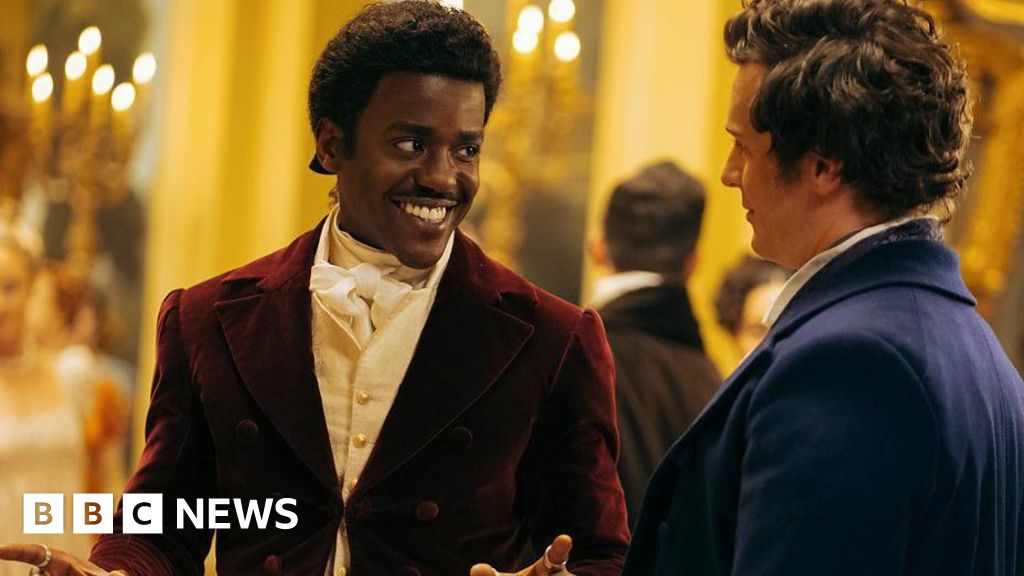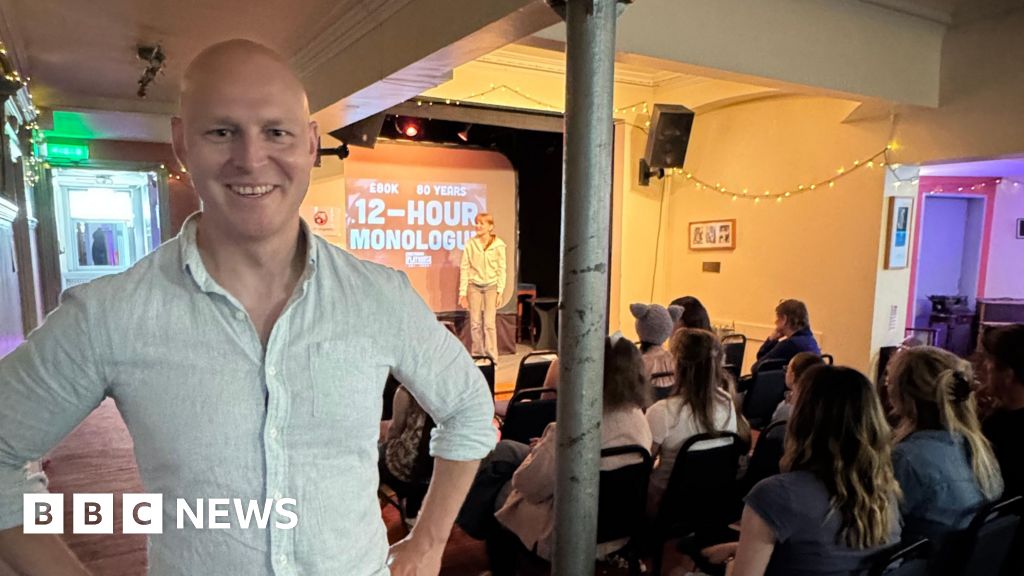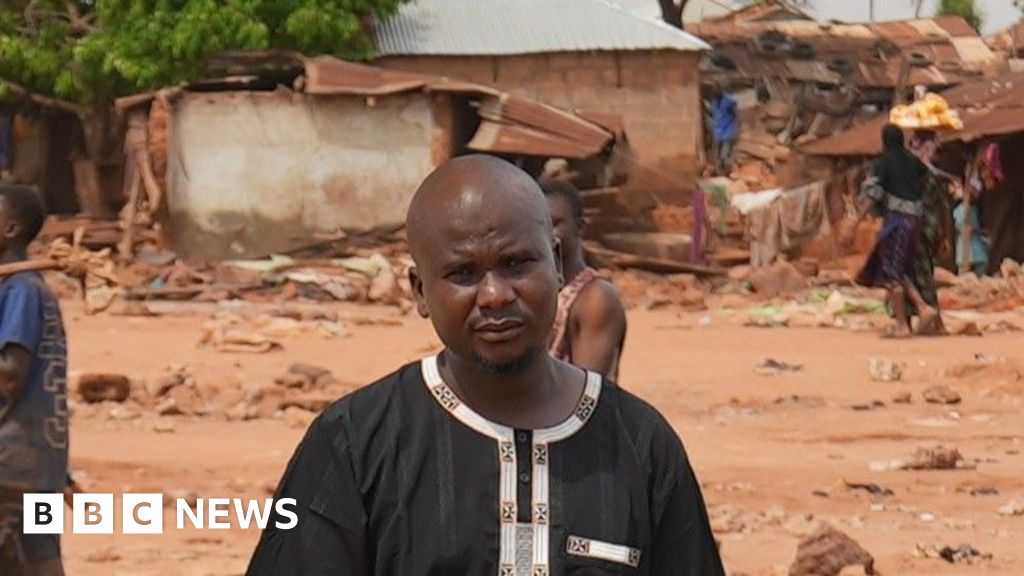- Green
A post shared by Candace Cameron Bure (@candacecbure)
时间:2010-12-5 17:23:32 作者:Green 来源:Books 查看: 评论:0内容摘要:Bill Craven, a 25-year veteran engineer, described the mood among union members positively. He said they usually don’t get to congregate because they are typically passing each other on the rails at 100 mph.Bill Craven, a 25-year veteran engineer, described the mood among union members positively. He said they usually don’t get to congregate because they are typically passing each other on the rails at 100 mph.
Shem Tov has embraced the role of advocating for those still hostage — something his parents were already doing — telling anyone who listens they must be brought home.“It’s really fulfilling. I love what I am doing but don’t like the cause,” he said. “I wish they were all here today. I hope it will be soon and in good circumstances.”

And while he is reluctant to talk politics, Shem Tov worries Israel’sputs the remaining hostages in danger.“Every soldier for me is a hero,” he said. “But there is a big but. For me and the hostages, it’s difficult for us while the army is in the area. Places near us are being bombed. I support the army but we have to get them out.”

“If you keep on going with the military pressure, there is a big chance they will be killed.”KHAN YOUNIS, Gaza Strip (AP) — Shehada Hijazi woke at dawn. It was his best chance, he thought, to get his hands on a package of food at a new distribution site run by a U.S.- and Israeli-backed foundation in the Gaza Strip. Thousands of others, equally desperate to feed their

, had the same idea.
By the time Hijazi walked the 7 kilometers (4 miles) to the southern tip of the territory, a militarized zone that has been evacuated of its residents, it was chaos. People pushed and shoved for hours as they restlessly waited outside the site, surrounded by a barbed-wire fence, earth berms and checkpoints. When it opened, the crowd charged, rushing toward hundreds of boxes left stacked on the ground on wooden pallets.The best way: Cold water immersion. Basically, “you drop them in a water bucket,” Salas said.
But those aren’t always around. So emergency rooms pump patients with cool fluids intravenously, spray them with misters, put ice packs in armpits and groins and place them on a chilling mat with cold water running inside it.Sometimes it doesn’t work.
“We call it the silent killer because it’s not this kind of visually dramatic event,” Jay said. “It’s insidious. It’s hidden.”This story has corrected to “humidity,” rather than “temperature” in a mention of how people’s function is affected by humidity.
- 最近更新
- 2025-07-07 07:00:49Photos: Iranian missiles hit Israel after US bombs Iran’s nuclear sites
- 2025-07-07 07:00:49watchdog report on his Signal use
- 2025-07-07 07:00:49Liverpool soccer star Diogo Jota killed in car crash in Spain, police say
- 2025-07-07 07:00:49Fever beat Las Vegas 81-54 and snap a 16-game losing streak against the Aces
- 2025-07-07 07:00:49Iranian ambassador condemns US strikes after IAEA meeting
- 2025-07-07 07:00:49How a ‘Gold Mafia’ is looting Southern Africa, washing dirty cash
- 2025-07-07 07:00:49Photos: Panthers rout Oilers to capture second NHL Stanley Cup in a row
- 2025-07-07 07:00:49Pentagon's move to ban transgender troops
- 热门排行
- 2025-07-07 07:00:49"choosing my own adventure."
- 2025-07-07 07:00:49Japanese firm declares lunar mission a failure after crash landing
- 2025-07-07 07:00:49in May of 2024 about her weight loss journey
- 2025-07-07 07:00:49while climbing the steps of Air Force One
- 2025-07-07 07:00:49throwing food out left and right
- 2025-07-07 07:00:49Canada and EU inch closer together on defence
- 2025-07-07 07:00:49Hamantaschen with Four Fillings
- 2025-07-07 07:00:49Photos: Iranian missiles hit Israel after US bombs Iran’s nuclear sites
- 友情链接
- Video: Pro-Palestinian marches in cities around the world Photos: Search for survivors after Russian drones and missiles hit Kyiv US imposes new Mexican cartel sanctions, cites murder of TikTok influencer In Brazil, a fight over offshore drilling tests Lula’s climate ambitions Can divided European powers help end Israel’s war on Iran? Nippon Steel acquires US Steel for $14.9bn after months of struggle Syria church bombing attack kills 25, dozens wounded See inside newly found smuggling tunnel under Mexico-US border Explosion at fireworks factory in China kills 9, state media says Israel strikes Iran’s Isfahan nuclear site, buildings on fire in Tel Aviv Russia-Ukraine war: List of key events, day 1,214 Petro’s labour reform referendum suspended by Colombia’s Council of State Russia-Ukraine war: List of key events, day 1,214 Russia-Ukraine war: List of key events, day 1,215 Hurricane Erick weakens after hitting Mexico’s coast as Category 3 storm Panama declares emergency in western province after deadly pension protests ‘Amazing feeling’: Marc Marquez wins Italian MotoGP for Ducati on home soil Hurricane Erick weakens after hitting Mexico’s coast as Category 3 storm Russia-Ukraine war: List of key events, day 1,213 History of US-Iran relations: From the 1953 regime change to Trump strikes ‘Massive’ Russian air assault kills at least 10 in Ukraine’s capital Kyiv Satellite images show damage from US strikes on Iran’s Fordow nuclear site Iranian missiles slam into Israel as huge explosions rock Tehran Video: Pro-Palestinian marches in cities around the world Dashcam captures huge blast in Ashdod in Israel Colombia’s army says 57 soldiers kidnapped in restive southwest A port CEO panned Trump’s tariffs. Then a Chinese envoy’s wife sent praise Risk of Iran attack on US bases in Gulf likely not “huge” Thailand says ‘progress made’ in border dispute talks with Cambodia Thailand says ‘progress made’ in border dispute talks with Cambodia
